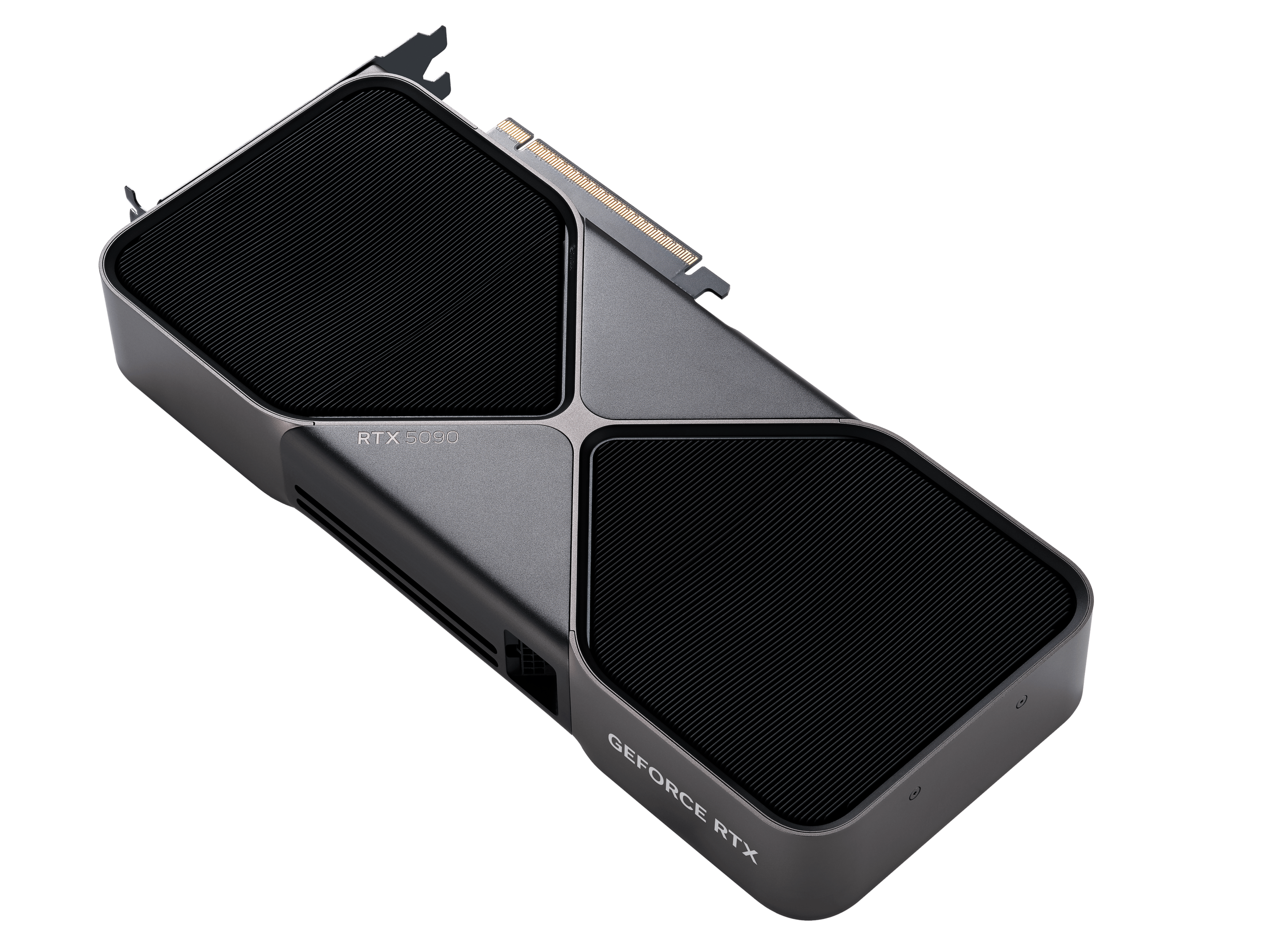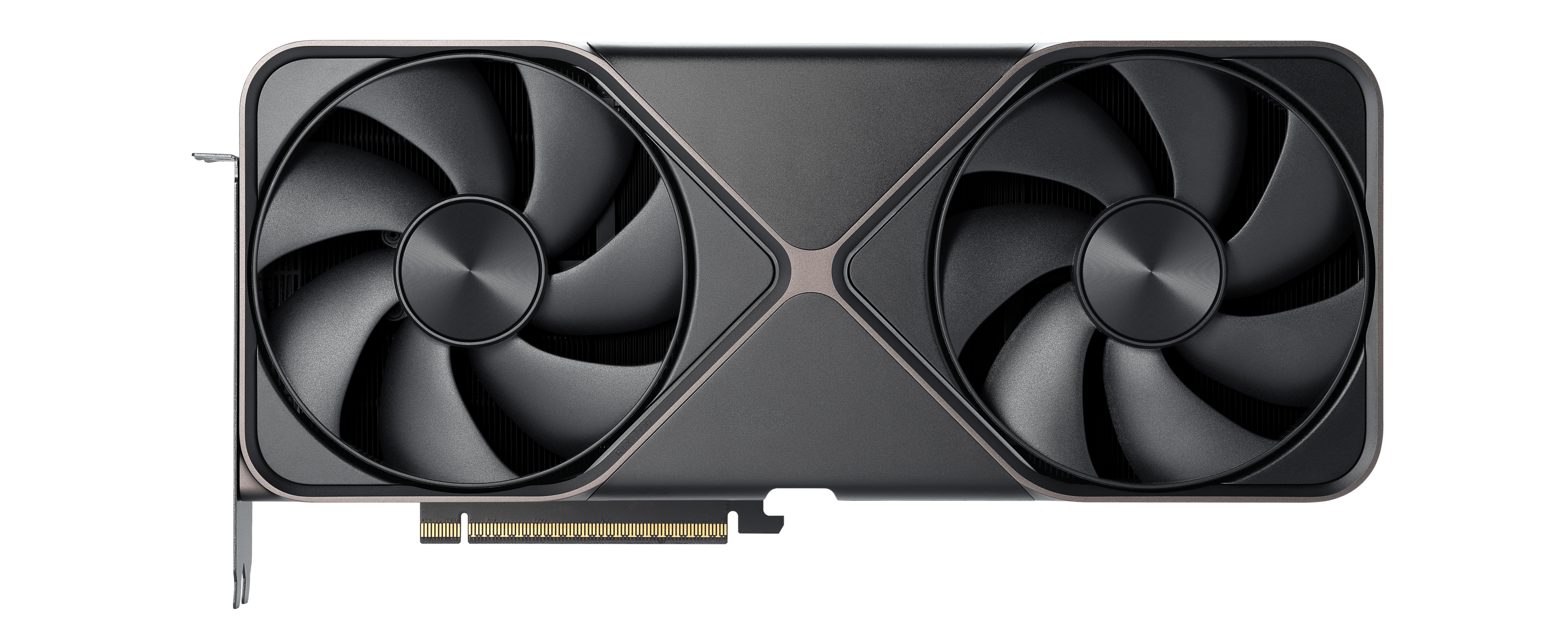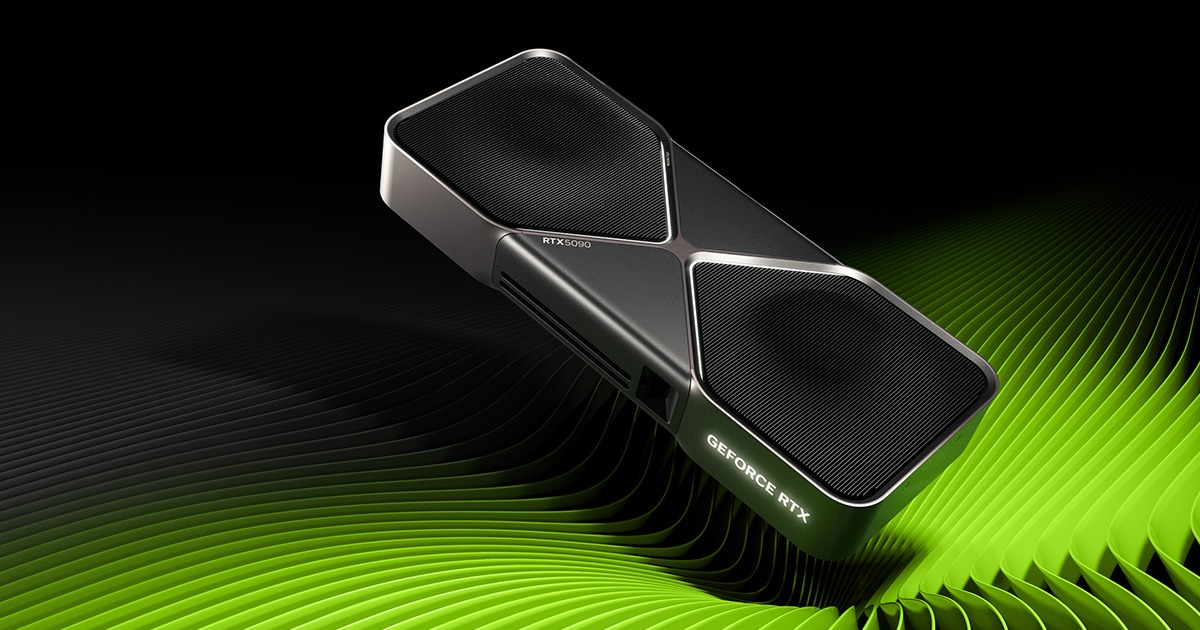NVIDIA has launched its next-generation graphics cards, the RTX 5000 series, featuring the top-of-the-line RTX 5090 model priced at $1,999. The RTX 5090 promises exceptional performance and visual fidelity, making it suitable for serious gamers and professionals. The card release date is set for January 30th, 2025 and is expected to sell out very quickly.
While this card will be popular with enthusiasts and high performance gamers, casual users may opt for more affordable alternatives that still deliver good gaming experiences (like the 5080, 5070 Ti, or 5070).
The article discusses the specifications and potential impact of the RTX 5090 and provides an overview of the entire RTX 5000 series to help consumers make informed decisions based on their needs and budget.
RTX 5090: Leading the Charge in the 5000 Series

A New Performance Champion
The RTX 5090 has arrived, and it’s making a grand entrance. Unveiled at CES 2025, this graphics card is not just an upgrade; it’s a statement. NVIDIA claims it delivers twice the performance of its predecessor, the RTX 4090. While independent benchmarks are still pending, early leaks and internal tests suggest this claim might hold true. This leap in performance is attributed to a trifecta of advancements: the new Blackwell architecture, a massive increase in CUDA cores, and the introduction of GDDR7 memory.
Blackwell Architecture: The Foundation
The RTX 5090 is built on the Blackwell architecture, a significant evolution from the previous Ada Lovelace architecture. Blackwell brings improvements in ray tracing efficiency, AI processing, and overall rendering capabilities. This translates to better performance in games, faster rendering times for content creators, and enhanced capabilities for AI-driven tasks.
CUDA Cores and Clock Speeds
The 5090 boasts a staggering 21760 CUDA cores, a significant jump from the 16384 cores in the 4090. This increase in core count contributes directly to the card’s raw processing power. The boost clock speed is 2.41 GHz, slightly lower than the 4090’s 2.52 GHz, but the architectural improvements and increased core count more than compensate for this difference.
GDDR7 Memory: A Speed Boost
One of the most exciting aspects of the 5090 is its use of GDDR7 memory. This new memory technology offers significantly higher bandwidth and improved efficiency compared to the GDDR6X used in the 4090. The 5090 comes equipped with 32 GB of GDDR7 memory, double the capacity of the 4090. This combination of increased capacity and faster memory speeds ensures smooth performance even in the most demanding tasks.
Power Consumption and Thermals
With great power comes, well, a need for more power. The RTX 5090 has a TDP of 575W, considerably higher than the 4090’s 450W. This means you’ll need a robust power supply to accommodate this card. NVIDIA has implemented advanced cooling solutions to manage this increased power draw, but it’s something to consider for your system build.

DLSS 4 and Ray Tracing
The 5090 supports the latest DLSS 4 technology, which uses AI to upscale images and improve performance. This allows for even higher frame rates and smoother gameplay, particularly at higher resolutions. The card also features enhanced ray tracing capabilities, enabling more realistic lighting, shadows, and reflections in games.
Price and Availability
The RTX 5090 is priced at $1,999, a premium price for a premium product. It’s available for purchase starting January 30th, 2025. However, due to high demand and potential supply chain constraints, availability might be limited initially.
Specifications
| Feature | RTX 5090 |
|---|---|
| Architecture | Blackwell |
| CUDA Cores | 21760 |
| Boost Clock | 2.41 GHz |
| Memory | 32 GB GDDR7 |
| Memory Interface | 512-bit |
| TDP | 575W |
| Price | $1,999 |
The RTX 5000 Series: A Lineup for Every Gamer
While the RTX 5090 grabs the headlines, the entire RTX 5000 series offers compelling options for gamers of all levels. The RTX 5080, priced at $999, provides a more balanced approach with 10752 CUDA cores and 16 GB of GDDR7 memory. It’s a great choice for those who want high-end performance without the 5090’s price tag.
The RTX 5070 Ti and 5070 cater to the mid-range market, with prices of $749 and $549 respectively. These cards offer excellent performance for mainstream gamers and content creators. They both feature GDDR7 memory and leverage the Blackwell architecture to deliver a significant upgrade over the previous generation.
Short Summary:
- RTX 50 series launched with a flagship performance GPU, the RTX 5090.
- Powered by Blackwell architecture, it boasts unprecedented gaming capabilities.
- New DLSS 4 technology claims to enhance performance with improved graphics output.
At the Consumer Electronics Show (CES) 2025, Nvidia (NVDA) CEO Jensen Huang took center stage to introduce the much-anticipated GeForce RTX 50 series of graphics cards, including the powerhouse RTX 5090. This card is built on the new Blackwell architecture, aimed at pushing the limits of gaming and AI capabilities, promising an enhanced experience for both gamers and creators alike. With a price set at $1,999, the RTX 5090 aims to captivate the high-end gaming market.
The RTX 5090 stands out as the flagship model in a lineup that includes the RTX 5070, RTX 5070 Ti, RTX 5080, and the RTX 5090. In contrast to the previous RTX 4000 series, the RTX 5090 is priced at a $400 premium over the RTX 4090, which may raise eyebrows among budget-conscious consumers. However, Nvidia has described its new architecture as a game changer, marking a significant upgrade in performance and technology.
“The advancements in our new GPUs allow gamers to experience graphics and gaming performance that were previously unattainable,” said Jensen Huang during the event.
Performance Enhancements and DLSS 4
At the heart of the RTX 5090 is the cutting-edge technology of NVIDIA Deep Learning Super Sampling (DLSS) 4, which significantly optimizes performance. NVIDIA’s latest version of DLSS includes a revolutionary feature known as Multi Frame Generation. This innovation allows the GPU to render multiple frames for each game scene, improving frame rate—a critical factor in delivering a seamless gaming experience.
According to Nvidia, this Multi Frame Generation takes gaming performance to new heights, achieving up to 8 times the improvement over previous rendering techniques. This means that gamers can expect dramatically boosted frame rates, even in graphically intense applications like Cyberpunk 2077 and Alan Wake 2.
“DLSS 4 will redefine gaming graphics, providing an experience that is not only faster but also visually superior,” Huang asserted during his keynote.
Key Specifications
The core specifications of the RTX 5090 solidify its status as a top-tier GPU. Key components include:
- CUDA Cores: 21,760 cores
- Memory: 32GB GDDR7
- Memory Bandwidth: 1,792 GB/s
- Base Clock Speed: 2.01 GHz
- Boost Clock Speed: Up to 2.41 GHz
- TDP: 575W
This GPU is designed for intensive tasks, including high-resolution gaming and demanding creative workflows, making it ideal for professionals as well as enthusiasts.
Comparative Performance with Previous Generations
The RTX 5090 is not just an incremental upgrade; it represents a significant leap over the RTX 4090. Nvidia claims that its latest GPU offers a 70% improvement in performance compared to its predecessor. This is particularly compelling for users engaging in resource-heavy applications, such as gaming at ultra settings or performing complex computational tasks.
Market Reception and Pricing Dynamics
Despite concerns over pricing and the high energy consumption associated with the RTX 5090, Nvidia seems undeterred in its goal to maintain a leadership position in both the gaming and AI sectors. During the CES event, Huang emphasized the card’s capabilities while also addressing concerns over power requirements.
“The RTX 5090 is designed for both performance and efficiency, targeting users ready to power their creative and gaming endeavors,” said Huang.
Nevertheless, Nvidia’s stock (NVDA) encountered a downturn shortly after the announcement, with shares dropping by 5%. This could be attributed to investor uncertainties surrounding the high pricing strategy and its impact on sales.
Availability and Future Prospects
The RTX 5090 and its companion models are set to hit the market starting January 30, with the RTX 5070 and 5070 Ti available in February. Nvidia has chosen to skip its Founders Edition model for the RTX 5070 Ti, prompting speculation regarding new designs and features that may surface later from board partners.
Implications for Gaming and AI
Nvidia is not just focused on enhancing gaming experiences; it also aims to leverage this technology in artificial intelligence and machine learning. The new architecture’s ability to handle complex computations makes it attractive for AI developers and researchers.
Consumer Considerations
The RTX 5090 holds great appeal for gamers looking for unmatched power, yet the cost and energy requirements may lead others to consider mid-range alternatives. A compact RTX 5070 model is priced at $549, offering value to casual gamers who may not need the full force of a premium GPU.







